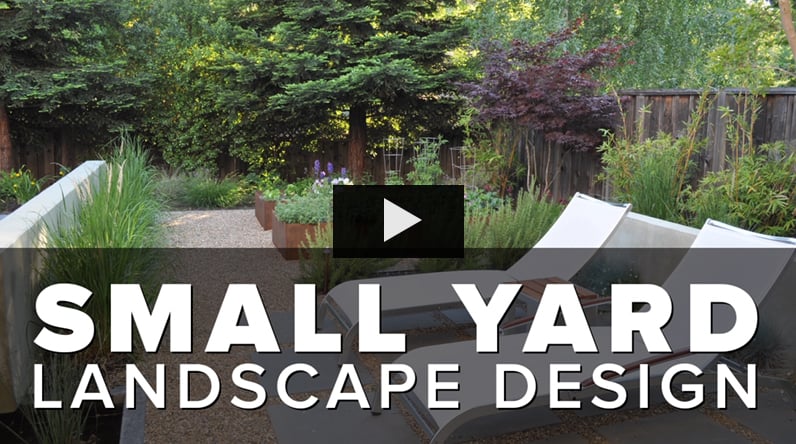Small Garden Ideas
See how gardeners around the country have created wonderful gardens in small spacesSmall gardens have a lot more potential than you may realize. Whether dealing with a long narrow space behind a vintage home, a cramped backyard that lacks privacy, or a shabby garden at the rear of a brownstone the possibilities are endless. So don’t write off your 40-foot by 20-foot outdoor area just yet—with the right design, it could be an incredible garden.
On this page:- POPULAR SMALL GARDEN ARTICLES
- CONSIDER FUNCTIONALITY
- 13 TIPS FOR SMALL SPACES
- SMALL GARDEN INSPIRATION
- MORE SMALL GARDENS
POPULAR SMALL GARDEN ARTICLES

See how a designer made the most of this little, enclosed backyard.

Learn the basics of designing a small-scale balcony garden, plus get tips for selecting the best plants and containers.

Practical tips for increasing your harvest when every square inch matters.
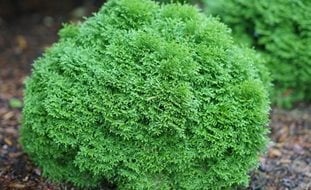
Add year-round color to your yard with these small evergreen shrubs.

Add small or dwarf flowering shrubs to your landscape for seasonal color.
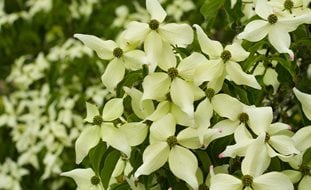
From trees and shrubs, to flowers and grasses—discover 10 plants for a small garden.
CONSIDER FUNCTIONALITY
Designer Karen Chapman says, "Neither beauty nor function needs to be limited by the size of your outdoor space, but it is important to prioritize your wish list in order to make every square inch count." She offers the following advice, suggestions, and tips:
Do you love to entertain family & friends?Entertaining outdoors always seems so much more relaxed, both for the hosts and the guests, but how many people do you need to accommodate? Two for an intimate lunch? Eight for a sit-down dinner? Twelve or more for an informal BBQ?
Versatile elements that can satisfy more than one function are key in maximizing the potential of small spaces.
- Folding bistro tables and chairs can easily be stored when not in use and are lightweight enough to make set up a breeze.
- Extending patio tables offer versatility when you need to accommodate varying number of guests.
- Add a padded cushion to a sturdy low table to serve as an occasional ottoman or stool.
- Capped retaining walls and raised beds can pull double duty if they are at seating height (approx. 17”) and softened with cushions or a folded blanket.
- Use bench seating at a rectangular patio table rather than individual seats - you will be able to seat more people—ideal for families with small children.
- Rather than a traditional wood-burning fire pit which can look unattractive when not in use and take up a lot of space, consider a gas fire table. These serve as a beautiful focal point even when not in use and are ideal for doubling up as a coffee table thanks to the solid rim.
Are you hoping to grow cut flowers, your favorite herbs, or a few vegetables? When space is limited, it is especially important to determine which of these are worth growing yourself, and which are better to purchase seasonally from your local farmer’s market. Focus on growing flowers and produce that are usually expensive, hard to find, have a short shelf life, or you use regularly.
Is in-ground planting space limited?Container gardens provide a simple solution for limited in-ground growing; however, consideration should be given to their size and shape.
- Wide, round containers will take up a large footprint on a deck or patio. Look for rectangular. oval or elliptical shapes that can sit closer to a wall or railing.
- Avoid cluttering the ground with multiple small pots—one large, tall container will have much greater impact and be easier to water.
- Adding saucers with wheels under your containers enables you to move them around to create room dividers on a long deck, a secluded reading nook on an exposed patio or simply to follow the pattern of the sun during the growing season.
13 DESIGN TIPS FOR SMALL SPACES
Having considered the functionality of your space, here are a few designer tips to help you really maximize its potential and create the illusion of a much larger garden.
- Look for compact plants. Choose plants that won’t overwhelm the ground plane, but don’t be afraid to include moderate sized or columnar trees to achieve the appropriate scale.
- Think outside the box. What about vertical gardens? Railing planters? Hanging baskets for strawberries? (See an example of a living wall/vertical succulent garden below.)
- Build a strong foliage framework. Use interesting plants with colorful leaves before layering in flowering plants.
- Make every square inch count. Focus on high-value trees, shrubs, and perennials that offer multiple seasons of interest with attractive leaves, seasonal flowers, unique textures, colorful bark and/or great fall color.
- Create privacy. You may not have room for large evergreen trees and shrubs to create privacy. But, would a row of one of the many columnar varieties that provide height—without the width—work? If only seasonal screening is needed, perhaps narrow, columnar, deciduous trees or shrubs would be suitable? Or perhaps growing well-behaved climbers (e.g. jasmine or annual vines) on a vertical trellis would be the best solution.
- Do you really need a lawn? Does your lawn visually break up your space unnecessarily? Does it make more sense to extend the patio?
- Choose outdoor furniture with care. Forgo extra deep armchairs with wide armrests in favor of sleeker profiles.
- Add a water feature. Water features are always a great addition to a garden. While a pond and waterfall may not be realistic, a simple recirculating wall fountain or bubbling tabletop pot may be the answer.
- Create a sense of order. Clean lines bring an orderly feel to the garden. A clear rectilinear design can define spaces, while flowing organic curves can be used to soften awkward angles.
- Use the diagonal axis. A typical suburban garden is often wide but shallow. Looking straight across the back garden therefore emphasizes the shortest dimension. Alter the perspective by turning the patio, planting beds, and sight lines 45-degrees to line up with the diagonal axis, creating the illusion of a much larger space. (See an example of this design strategy below.)
- Keep the color palette simple. Two or three colors in varying shades, together with green, will be less visually cluttered than a jelly-bean-like explosion.
- Borrow views from outside your boundaries. Frame a distant tree, mountain, or unique architectural detail to give the illusion of greater depth.
- Add outdoor lighting. Create drama and mystery, while extending the use of the garden into the evening hours.
See planting diagrams and plant lists for small landscape designs from Proven Winners.
SMALL GARDEN INSPIRATION

A strong rectilinear design defines each element clearly, allowing enough space for an upper dining terrace, illuminated pathways, a narrow water feature and contemporary raised beds filled with an abundance of colorful foliage in a restrained palette. Photo: Darcy Daniels
See more of this garden: Going Beyond the Straight and Narrow
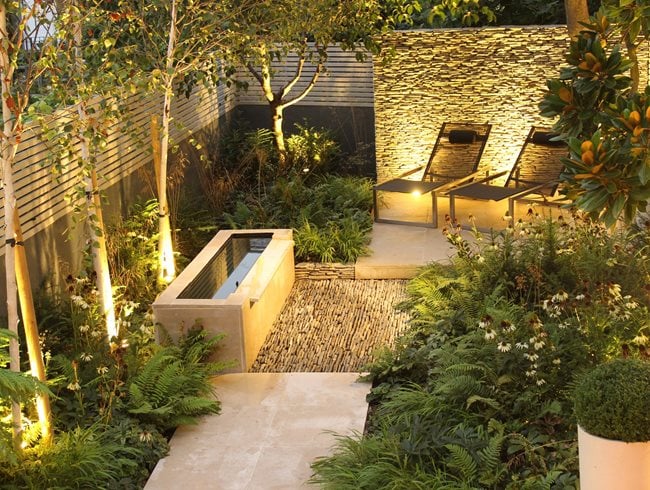
Landscape theater is created by the strategic placement of lighting fixtures while clean lines, carefully selected plants, and sleek furniture make the most of this small garden. Photo: Daniel Shea
See more of this garden: London Garden Calls Day and Night.

Retaining walls can double as occasional seating for guests to supplement the lightweight bistro set. Photo credit: Marion Brenner
See more of this garden: A Small Property Gets a Simple & Sustainable Garden

The backyard was transformed by installing a spa, custom lighting, and a lush vertical garden that clads an existing retaining wall. Resurfacing the narrow landing and adding a stairway made of 6-inch-thick sandstone slabs created two levels of outdoor living space. Photo by: Karl Seifert
See more of this garden: Small Backyard Makeover: Using Every Square Inch

Turning the paver patios 45 degrees to the house emphasizes the long diagonal axis, creating a more interesting layout and giving the illusion of greater depth. Design by Karen Chapman, Le jardinet
MORE SMALL GARDENS

A tiny backyard is transformed into a functional, family-friendly retreat that uses every inch.

Designer Greg Loades shares 5 tips he learned while designing his own urban garden.

An overgrown garden is simplified and tidied, resulting in a comfortable and calm retreat.

A tiny, narrow lot becomes a pocket-size garden full of treasures.

A courtyard goes from dull to distinctive, loaded with color & personality.

A sliver of backyard space is transformed into a multifunctional living area.

A small property proves to have unlimited possibilities for one family.

The clean lines of this minimalist garden reveal that less is more.

Usable ideas and elegant solutions for a long, narrow, shady space.

A small urban garden strikes a balance between beauty and function.

A tight, awkward space becomes a garden for relaxing and reflecting.
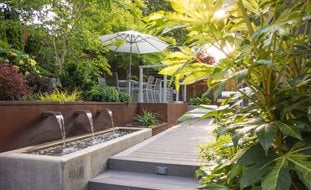
Browse photos of landscapes that make the most of limited space.
